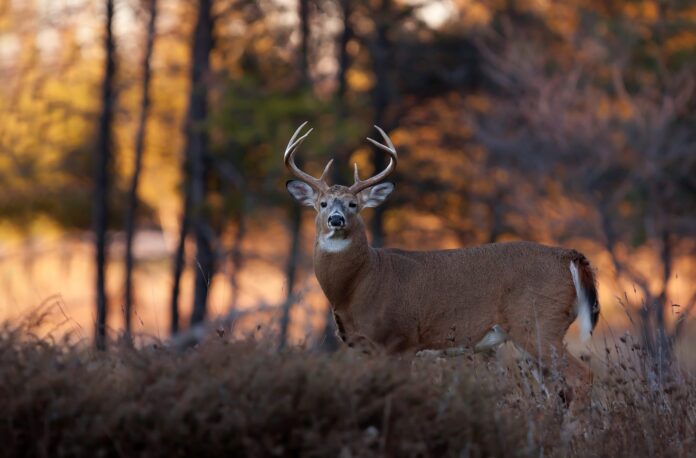AUBURN UNIVERSITY, Ala. – Predators play an important role in wildlife ecosystems. You can think of them as nature’s own regulatory service. Without their presence, prey populations would quickly overtake habitats, leading to mass areas of depleted resources. Predators also remove injured and diseased prey populations, potentially reducing the spread of illnesses to other wildlife.
Even with these added benefits, there may be times where landowners want to consider implementing a predator control strategy to increase game populations. Mark Smith, an Alabama Cooperative Extension System expert in wildlife sciences, said while this is a legitimate management tool, there is a lot that goes into using it effectively.
“You rarely hear a wildlife biologist recommend removing predators to increase game populations, because it is not practical for most people to do it effectively,” Smith said. “There is more to it than just killing a few predators.”
Predators of white-tailed deer
In the Southeast, the primary predators of white-tailed deer are coyotes and bobcats. However, while they can predate on deer fawn and even occasionally on adult deer, their diets typically consist of small mammals, such as rabbits.
There are a lot of factors that can influence predation, thereby influencing a predator management program. These factors may include weather, habitat changes, the variety of prey species and competition with other predators. Smith said these factors will vary, depending on the region.
“The ins and outs of deer predation in the Southeast are probably quite different from those in other parts of the country,” Smith said. “In other regions, you will have factors like snow, winter stress and other predators such as wolves and mountain lions that we do not have in the Southeast.”
Do you have a predator problem?
Before implementing a predator management strategy, landowners must first determine if there is even a problem to be managed. Simply seeing predators on your land doesn’t mean that they are greatly impacting the deer population. Smith said you must gather some data to guide your management decisions.
“I think the big thing here is to figure out first if you have a fawn survival issue,” Smith said. “There is no sense in investing the time and money to manage something that may not be a problem. Utilizing game cameras and your own observations throughout the hunting season will assist in gathering the needed data on fawn survival.”
While gathering this data, it comes down to how many fawns hunters are seeing. That number is then compared to the number of does to create a ratio. Smith said if you see a ratio of approximately 0.7 fawns per doe, then you are in a good place. However, if the ratio drops to around 0.2 fawns per doe, there may be a problem.
“This isn’t something that usually occurs overnight or even in one hunting season,” Smith said. “This type of decline usually happens over multiple seasons, so it is important to continually gather data.”
Implementing management tactics
If a predator problem is discovered, the real work would begin. To have a chance at success, landowners must implement a systematic and intense management system.
“When it comes to predator control, it is best to take an all-or-nothing approach,” Smith said. “Either do it thoroughly or not at all. Shooting the occasional predator during deer season isn’t going to do anything.”
To manage predators, foothold trapping will be the most cost- and time-effective means for removing predators. Landowners should use this method just before and during the fawning season. In the Southeast, that time falls between June and August, arguably the hottest months of the year. This would also need to be implemented over a large amount of land, between 5,000 and 10,000 acres, because of the large home ranges of predators.
“Very few landowners have access to or control that amount of land, so they would more than likely have to get their neighbors involved,” Smith said. “This takes a lot of time and effort, so it may also require hiring a full-time trapper to implement the level of trapping needed to adequately remove a sufficient number of predators to maybe see a response in fawn survival.”
Even if these strategies work, predators will naturally recolonize an area relatively quickly. They will travel from nearby land where the management tactics were not implemented. In bobcats, they have even been known to recolonize an area within a few days. Therefore, landowners would need to do predator management every year.
There has also been research suggesting some predator populations will actually increase in response to high-intensity removal. Results from a classic study of coyote populations in Texas done in the 1970s revealed that coyotes still living in the high-intensity removal area were reproducing nearly three times as many pups as coyotes in the light-intensity removal area.
“This high reproductive success was because the coyotes in the high-intensity removal area had more resources available to them,” Smith said. “So, these coyotes were able to devote more energy toward reproduction.”
Conclusion
Implementing a predator management system on your land isn’t as clear-cut as you may think. There are a lot of factors outside of a landowner’s control that may influence the results, so it’s best to temper expectations.
“It is dang near impossible to be successful at managing predators such as coyotes,” Smith said. “For example, 30 to 40% of coyotes are transient in nature. They just roam around a two-to-three-state area, looking for a home to settle in, and they will just keep coming.”
So, know that most predator management cases would be done more as a sport or hobby. However, Smith encourages hunters and those who enjoy the outdoors to learn about the art and science of trapping.
“People that are probably the most in tune with nature are those who know how to trap,” Smith said. “It is a great way to increase your time outdoors. However, be sure to follow your state’s trapping regulations.”




























